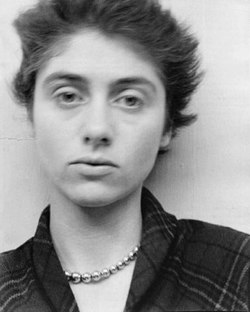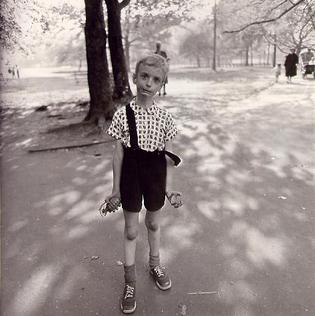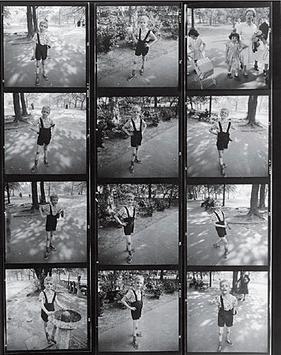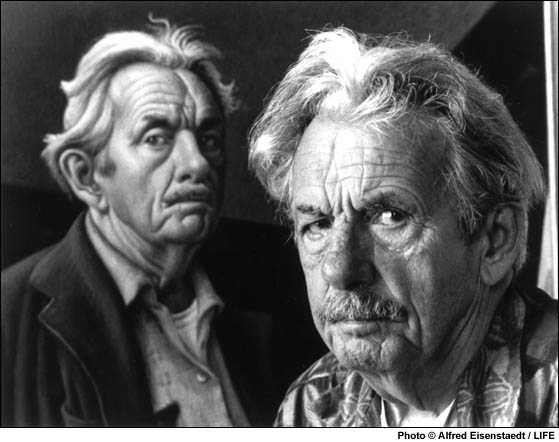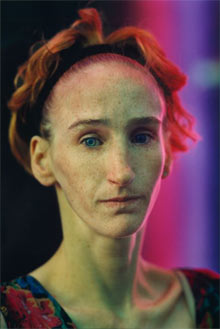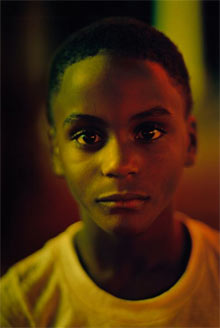Environmental Portraiture
"To explain the word ‘Environmental’ portraits It means to capture portraits taken of people in a situation that they live in (work, rest or play) and/or a place that suggests something to us about who they are."- Wikipedia
Initial Ideas
Here is a list of vocabulary I wrote down to plan my initial ideas..
*Eerie
*Dark
*Old
*Old Fashioned
*Antique
*Ancient
*Dated
*Not Current
*Not Modern
*Outworn
*Strange
*Shallow depth of field
*Dinged lighting
*Dull
*Bleak
I have a few of initial ideas for this project, two of which are stronger. I have always had an incline to photograph in the town of Bexhill-On-Sea; Purely because of the appearance of the town to the appearance of a modern town such as Brighton. It feels as if you are stepping back 50 years, the old concrete streets, dimmed lighting in the cafes and shops, eerie atmosphere: the list goes on. I particularly am intrigued by the cafes: The interiors and the people that work within that environment, the workers seem to match the old fashioned appearances.
Below are some photos I sourced from Google:
The old checked tiles and dated menus in the photo above have influenced me to photograph in cafes which have dated furnishings: I want to capture the worker in the middle of the cafe, with the features either side of them. Also I have another idea of creating a shallow depth of field so that the the worker is completely in sharp focus but with a half blurred background: this will produce the viewer to be drawn in to the centre of the image, I also hope that the viewer can guess their working professions from there clothing.
Following on from the information above I have altered my idea, I chose to shoot film in old fashioned sweet shops the idea of this being that the mountains of jars of sweets caught my eye, I found that this would create a very interesting quality to an image:reference to my first film.
Below are images I have sourced from the internet:
I like the idea of photographing the person off centre, to show the great scale of products behind and in front of him. Also I feel the portraits facial expressions suggests everything about there lives, shown through emotion. This man looks happy with his shop and life.
Sweet Shop Emporium
Hope and Green set up an old emporium sweet shop in Westminster, London. It was their childhood dream as they wanted to simply celebrate British confectionery. The shop itself celebrates the old fashioned era with glass jars of candy lining the walls, multi-coloured sweets that you wouldn't of even dreamed of. Even though this photo below doesn't include a person, it inspired me to create a busy background behind the model. So not only does the image include a portrait, the background becomes a bigger part of the image as well.
This photo below comes under the subject Environmental Portraiture: I love the way the funky patterned clothing matches the multi colours of the background and foreground of the sweets.
Sandwell Community History and Archive Service
A Victorian corner shop
I feel if you are photographing someone in there environment it should present their personality. This little boy's favourite environment is the local sweet shop. These two images have inspired me to push my ideas further, experimenting with angle and the positioning of objects found specifically in their environment. And positioning the objects above their heads to add a comical approach to the image.
Furthermore, the textured and worn surface of the image gives it an old fashioned, rustic appearance I may experiment with scanning crumpled paper, and then sandwiching it on Photoshop over the top of the original image. Hopefully this will have the same effect.
Furthermore, the textured and worn surface of the image gives it an old fashioned, rustic appearance I may experiment with scanning crumpled paper, and then sandwiching it on Photoshop over the top of the original image. Hopefully this will have the same effect.
Pennington's Sweet Shop, Old Meeting Street, West Bromwich,1910
'Description: A black and white photograph of Penning ton's sweet shop in Old Meeting Street, West Bromwich, which stood next to St Andrew Church. On the upper wall of the shop are advertisements for Frys chocolate and Cadbury's chocolate, and the services of bricklayers and slaters'-http://blackcountryhistory.org/collections/getrecord/GB146_PHS_824/
Textured and worn photographs:
- Textured
- Worn
- Crumpled
- Adds to the effect of the photo by increasing the texture
Research
Dennis Welsh
This photograph above is by Dennis Walsh(http://denniswelsh.com/new-work.html#num=0&id=New):
This enviromental portrait is particularly interesting as the wide angle shot shows the giant mass of cranberries this guy works with. I love the contrast between the top and bottom colours, the top presenting a natural, neutral tone comparing to the panel of bright red below, the actualy portrait itself is beautiful you can tell by the farmers face that he is very pleased with himself and the position of his body suggests this also.
Researching Walsh I came across an interview with e-photos:
E-photos interview:Outdoor lifestyle and environmental portrait photographer Dennis Welsh
ephotos: Hello Dennis. I'm sure our readers would love to know a bit more about you and your work so we'll start with the basics. Where are you based?
DW: I use nearly every type of equipment, from Canon EOS Digitals, to a Contax 645 with a P45+ back, to a Linhof 4x5, all the way down to Diana plastic cameras.

ephotos: Are you represented by any stock agencies?
DW: I’m with Getty Images (in the film division), UpperCut Images, and Aurora Photo.
ephotos: Where have you been recently?
DW: Over the last few months, I’ve been out in California a bunch shooting different projects, and I was just down in Mexico shooting another project as well.
ephotos: Do you ever just shoot for fun?
DW: I try to shoot for fun all the time. But I also try to keep in mind that there are times that you should put the camera down and have fun just for the sake of having fun. A couple of months ago, I was out in Tahoe shooting with a professional skier, and after we were done shooting, I packed up the photo gear, put it in the car, and went out for the afternoon skiing with her. It was probably the most fun I had had all winter!
ephotos: What's next for you Dennis?
DW: I’m doing some research on two personal projects later this summer. Hopefully, I’ll have photos to send when it’s all done.
Ahikam Seri
Ahikam Seri was born in 1972: in Jerusalem. Seri has stayed in his home country, he is mainly concerned by documentary photography which is exhibited throughout the world in newspapers and magazines. Although my project has to be based on Environmental Portraiture I feel there is a thin line between the two: Below a Jewish man is showing the difference between his crops, of what it should look like and how it has turned out. The wheat on the left is the freshly grown produce, and on the right is the dried out wheat. The expression on his face suggests he is fed-up of the consequences of war and the infrastructure that is left behind for them. I feel Seri specifically focuses on finding models for his photographs that have a vivid character of which is shown through their body language.
“I always think it is good to look at our own back yards.”- Ahikam Seri
Above photo title: Yonathan, Ayalah Tadesah, also known as Yonathan: February 20, 2006
He is a homeless person in his current refuge. The refuge is an abandoned house in central Jerusalem, he has been living there for the last four years. Yonathan quotes that he drinks alcohol almost every night in order to fall asleep and overcome the fear of possible intruders.
Seri has inspired me to choose models that have a natural aura, with interesting characteristics at first glance. I went out after studying Seri and he inspired me to produce my second shoot with a young lady in an old vintage shop: she had a unique style and her attitude seems a little dazed.
Imigrant song-http://syariffazizi.wordpress.com/category/environmental-portraits
For this project I would love to explore experimentation:
Below I have sourced photographs that I feel have influenced me to do this.I particularly like the idea of scanning in paper and layering this on Photoshop, then adjusting the opacity levels to create an old fashioned texture to the surface: also looking at past photos from my nan's has inspired me as they suggest growth and ageing: the crumpled lines comparing to the paths you take in life, ageing is suggested through worn and faded paper. Observing these images has pushed my ideas further, as now I want to experiment with other materials such as shear opaque materials like netting.
http://kindred-spirit.co.uk/memories-of-world-war-one/
David Kindred photographed these images in Ipswich, a lady called Nellie page has helped to recall her past. Stating the tough times she was caught up in, in the first world war. Starvation and loss being the main causes of grief- This quote from Page suggests the low and highs of there lives in that era:
"Terrified cattle would be driven down Mount Street to the slaughterhouse. Somebody at the top of the street would shout “Cows” and women pulled their children inside and slammed their doors. Years later I realised that it was a cruel and appalling arrangement but as a child brought up in a harsh environment it was just part of the life we led."
I want my final photographs to look eerie and creepy in some aspects:
Isambard Kingdom Brunel (1806-1859)
Isambard Kingdom Brunel
Chains of the Great Eastern (1857)
He is wearing a top hat and heeled shoes, which conotates to being a rather intellectual, clever and rich man. Very grand character: Brunel also has very dirty and creased clothing of which signifies him being a practical man working hands on.
The mechanical chains in the background suggest he works on big structures, furthermore the chains look as if they are from a ship suggesting he works in a dockyard: Brunel does he created the biggest ship formed from metal named The Great Eastern.
He holds his body language with his right leg bent and his left leg straight, with both his hands in his pockets suggests that he has better things to do and that he is an impatient man, he is not connecting with the camera and forming eye contact which suggests he is bored and uninterested in having his photograph being taken.
Diane Arbus (1923-1971)
Arbus is a very famous figure in contemporary photography, she has produce a substantial amount of work before she sadly committed suicide in 1917 at the age of 48 years. Her work is mainly based around people that aren't accepted into the world, specifically capturing shots of 'normal people' but outlining the weird features of themselves. This was seen as quite controversial back then and also today. Norman Mailer of whom did not particularly understand her work was quoted in 1971 saying
"Giving a camera to Diane Arbus is like putting a live grenade in the hands of a child."
Diane Arbus Portrait
By Allan Arbus
1949
Arbus became very famous after her death in 1971, in 1967 the Museum of Modern Art in New York City presented New pieces of work,Arbus being one of them. The public were intrigued as the work of Diane Arbus was being exhibited. This video sourced from YouTube explores her work and ideas, often in her own words as spoken by a close friend of Arbus's. It includes the people that knew her best, and the people who were there throughout her short life: daughter Doon, teacher Lisette Model, colleague Marvin Israel, and John Szarkowski.
The quote below suggest that Arbus she is very much into environmental portraiture and the idea of going out wondering the streets, until she comes across something intriguing:
“I work from awkwardness. By that I mean I don't like to arrange things. If I stand in front of something, instead of arranging it, I arrange myself.”-Diane Arbus
Below is an example of her work:
Boy with a hand grenade
1962
This photo the boy with a hand grenade is a particularly famous photograph. The photo is of a boy, with the left strap of his dungarees awkwardly hanging off his shoulder, he is tensing his skinnny anaemic hands either side of his body. Particularly what he is carrying makes the photo so famous today, a toy hand grenade. His intriguing facial expression suggest that was impatient, quoting the boy told her to 'Take the picture already'.This photograph of his is one of several she has taken of him, it stands out the most as he doesn't look happy like the other shots. I have included the contact sheet to show the difference in shots.
"What I'm trying to describe is that it's impossible to get out of your skin into somebody else's.... That somebody else's tragedy is not the same as your own." And of her subjects who were physically unusual, she said, "Most people go through life dreading they'll have a traumatic experience. These people were born with their trauma. They've already passed their test in life. They're aristocrats."
August Sander(1876-1964)
August Sander is a German portrait photographer from the 20th century. His photographs are mainly a figure shot from head to toe or sometimes just the torso and head, I think he does this to show the contrast and to compare the different between the individuals. I feel this idea of presenting different photographs as part of a series is a very clever idea of Augsts, as people can look at it and easily compare them against each other.
The image below of the Bricklayer seems as if he should be hardy man, but his face tells a different story: he seems to be putting it all on, showing off in a way to suit the job he does. I feel below his tough expression is something rather sensitive. In all of August's images creates August pays specific attention to a sense of sensitivity to his individual subjects, shown through angles, expressions, posture, costume and the environment around them.
“I hate nothing more than sugary photographs with tricks, poses and effects. So allow me to be honest and tell the truth about our age and its people.” - August Sander
August Sander, Bricklayer (1928)
All through his portfolios of portraits, Sander aims to give a truthful picture of their life. Instead of concentrating on just one section of society, he presents the poorest to the wealthiest: loking closely at the traditional country crafts workers and the workers from the city, even the unemployed. Sander also includes those who are disabled, ill and sometimes the bodies of the dead.
August Sander, Pastry Cook (1928)
Sander’s tries to compare peoples lives and the profession they are in; As in the 18th century people were only judged on their profession or class. Sander mainly shoots his
models wearing their work clothes and often shot with a vital object that suggests their profession.
Influence:
The way Diane Arbus’ and August Sander’s work are so successful, through the way they document those around them and create equisite portraits; they both use a certain technique and choice of subjects, their works are both equally as informative as each other. I intend my work to echo this.
Shoot 1
I carried on the idea of photographing in a sweet shop, the outcomes were not as I wanted them to turn out. Jan the shop owner was well poised but it was me who should have instructed moving, aligned with the jars of sweets, I think if I had of done this the outcome would have been stronger. Furthermore I should have put her off centre to make the environment more of the main feature.
Original Photos
This photo above I feel is the only one out of the shoot that has worked, Jan's body language suggests a laid back and humourous character, the only thing I do not think works with this photo is the reflection in the jars behind her: I have tried to edit this out and sharpen, but it doesnt seem to have made the image any stronger. If I was to re-shoot again I would use natural light or use a flash gun and bounce it off the ceiling: resulting in no white blotches in the background. I created a very contrasting tones, Isambard Brunel inspired me to do so.
- Flat image
- Built-in flash: reflections shown on the jars
- No eye contact with the viewer
- More documentary, as their isnt a connection with her in the environment.
- Wrong composition because of the obstruction in the bottom right corner
Influence:
What I have learnt from this shoot is to spend specific time on the composition of the image before I take the photograph then you will come out with a stronger image and unique character.
Experimentation
I began experimenting scanning paper in and sandwiching in photoshop, I feel this image is weak because I wanted the jars behind her to look sharper, therefore creating a more defined outline. The effect I used here has highlighted the model too much, this has made an over exposed and graphic appearance.
This is the original photo before editing in photoshop, with this photo I printed out and crumpled it with my hands then re-scanned it back in. The finished image is below.
I personally feel the outcome doesn't look that much different although in the final image the ladies face 'Jan' is a lot darker, I wanted the person to become the environment: the idea of fading and an old fashioned appearance. It does look visually stronger being cropped as the edges looked scruffy before-hand, being cropped the size look as if they are a snapshot from a photo album. I played around with the layers and different kinds of effects. I ended up choosing linear burn as this gave an equal texture with the photo on top and paper effect behind (in the environment).
Second Shoot
Moving on from this idea I decided to create a comparison between the worker and their environment, with significant objects positions above the workers heads. Also I want to some how incorporate taxidermy, with dead animals. Thereby, creating an old fashioned approach shooting in antique shops.
After reviewing my first shoot I decided to go out into Hove and Kemptown with the thought of capturing people in old fashioned and antique shops. At last I came across an old vintage shop with a young lady inside, her name was Sam. It attracted me as the walls were peeling and gave the exact texture I wanted in my images. The way she was dressed and her appearance in general fitted in because it was the old fashioned imagery I wanted to portray.
The image above is the strongest of my shoot, I edited it into black and white: The outcome is more visually attractive. Burning in on the horns has made the small details in the shape stand out from white wall behind.
The way she is standing straight onto the camera and her body posture gives off a creepy aura. I waited after the first fews shots to photograph again as I wanted her to relax and feel comfortable with me taking her photograph: The fragile paintings and objects around her give off a lighter touch to her almost grumpy facial expression, Her pastey skin complextion blends in with the colour of the wall in the background.
Lothar Wolleh (1930 -1979)
Lothar Wolleh was one of Germany’s most successful commercial photographers, he is known for his unique photographs ever since he picked up a camera. His work is quite minimalistic in a sense but when observing it he has created a humourous nature. After vieweing the photos like for example the one below you think further into the creator: Wolleh. He doesnt explain why the image is so weird but it does make you intruiged to view his photographs more and more for the mystery.
This photo is a individualistic, Wolleh is contrasting the face-less painting in the background to the portrait of the man in the foreground, Positioning the object: the painting behind him has made the photo with added interest as to me it seems he is trying to be humourous.
René Magritte portrait by Lothar Wolleh
Furthermore Wolleh and Soth both position objects above their models heads, Soth using taxidermy in his work. They both have a humorous touch to their images: they have inspired me in different ways to echo their ideas and produce features simliar to theirs.
Alec Soth (Sleeping by the Mississippi Project)
The work of Soth caught my eye whilst searching teaxidermy in google (is the act of mounting or reproducing dead animals for display)-Wikipedia. I love the way each individual portrait is not only themselves but holding an intriguing subject: whether its on their heads, holding it or even carrying it in a peculiar way. Much like the image below, the young teenage girl is holding a skeleton of a human, it conjures up many thoughts: of where she got the skeleton from? And why is she carrying it in such a way, as if it were alive? She also suggests a shocked facial expression, as in she has been caught.
The Last Days of W
Priscilla, Los Angeles, California
The image below has inspired me to recreate models with intriguing subjects in the frame, I have an idea to wonder round the streets in Kemptown until i come across small antique, bric-a-brac shops. I want to get a collection of images with the owner or worker standing underneath a particular feature of choice. Similar to the man in 'Taxidermy Art'.
Taxidermy in art, The Last Days of W - Alec Soth. 2008
The photo above by Soth inspured me to create a humourous touch to my images and also start to put in the use of dead animals, I have also created a reflection in the mirror as Soth did to add a unique touch and extra detail to teh background. Instead of positioning the horns either side of the model I chose to positon him directly infront which makes them seem attached to him.
This is my own interpretation of Soth's work.
The way Alec Soth and Lothar Wolleh's work are so successful through the use of documenting people in and around the environment: There works are both very informative, and have a comic approach for the viewer: I intend to echo this through the use of purpose misplacement.
This image below is only of a derelict room, peeling wallpaper and presenting the layers underneath. I found this photo by soth inspiring as it is similar to my photo of the woman Sam in the old vintage shop.
Although Alec Soth works with colour, his large-scale colour photographs combine nostalgia and humour. He usually photographs figures, landscapes or uninhabited places: The effect he uses for his finals is usually with natural light, the colours seem old fashioned and as if you have stepped back in time like the photo above. Soth encounters these extraordinary images whilst taking long road trips. Soth uses juxtaposition: photographing the familiar with the un-familiar.
"During these last days of the administration, what is the point of protest, satire or any other sort of rabble-rousing? In assembling this collection of pictures I’ve made over the last eight years, I’m not really trying to accomplish much at all. But as President Bush once said, 'One of the great things about books is, sometimes there are some fantastic pictures.'"- Alec Soth The Last Days of W - Alec Soth. 2008
Alfred Einsenstaedt (b.1898-d.1995)
"In 1932, I traveled to London hoping to photograph George Bernard Shaw. People told me he was very difficult and inaccessible, but I was also told that he was a vegetarian. So I bought a bunch of bananas and sent these, together with a portfolio of my photographs, to his home at Whitehall Court. Two days later I was asked to visit him.
He looked through my photographs and said:'You don't have to make me pose, I am a photographer myself"
Eisenstaedt inspired me specifically from this image: The way he has used a painting to compare the real life self and a self portrait of him is interesting, The wrinkles and his skin complexion look weirdly similar in the painting, I have taken this on board and re-created it with a man from hairdressers: against a greek painting of a man flashing his 'perfect' body I found it an entertaining idea.
Robert Bergman (b.1944)
Bergman has been taking photographs of people on streets in america for the last 40 years: In 1985 through to 1997 Bergman travelled America’s Midwest and East Coast in a car with a 35mm format camera, taking portraits of people he met along the way. Bergman started creating portraits of people in the urban environment with the only available light.
Art historian Meyer Schapiro quoted about Mr. Bergman’s photographs, “His finest works bring to mind some of the greatest painted portraits…The authenticity of Bergman’s art appears in the ‘hypnotic’ impact of faces that have attracted him as bearers of an unfathomable human presence, a self and a human condition."
The main techniques Bergman pays specific attention to whilst photographing are colour, composition, natural light and the connection he has with his subjects. This makes his portraits reflect the uniqueness of each subject and gives us an insight into each of the individuals lives.
Bergman is a street portraitist who always asks permission from his subjects, and moves around each individual slowly and patiently: shooting in colour and using a 35mm Nikon SLR camera. His portraits create an intensity of colour, and they also have a painted, blurry quality about them.
Bergman's models seem to consist of people of the street or outsiders. Many of the models also have a certain gaze, whether they are looking away from the camera or staring fiercely into the lens. Above is of a red haired girl with piercing blue eyes, she seems startled by the camera. The blurs of colour add to the
strange and almost sad aura of the portrait.
'Anonymous'Untitled, 1989
(Bergman refuses to title his images)
Bergman started shooting in colour in 1985. He uses an inkjet printing process to create the soft translucent tones in his photographs, the aura of mysterious light that sometimes seems almost holy. Although some may argue that Bergmans portraits are not in the environment, I feel they add a sense of mystery to the people that he has randomly picked off the streets, and taking into account the people that we pass on a daily basis.
John Londei(shutting up shop)
Londei produced a prject based on the disappearance of small shops. He focuses specifically on the small shopkeepers that is now an endangered species, he describes it as the big businesses pushing the small ones out of exsistence, not byoffering better service but by the sheer scale and the power of advertising. The main point he tries convey is that the means of this is making the heart of the community be lost, and become one big soulless industrial park.
His photos are taken throughout 1980 to 1986: He shoots on a 10x8 tranny film, this sometimes has an effect for making the subjects look wax like but Londei's hasn't. The character of the film is reflected by the personality of the worker.
Londei produced a prject based on the disappearance of small shops. He focuses specifically on the small shopkeepers that is now an endangered species, he describes it as the big businesses pushing the small ones out of exsistence, not byoffering better service but by the sheer scale and the power of advertising. The main point he tries convey is that the means of this is making the heart of the community be lost, and become one big soulless industrial park.
His photos are taken throughout 1980 to 1986: He shoots on a 10x8 tranny film, this sometimes has an effect for making the subjects look wax like but Londei's hasn't. The character of the film is reflected by the personality of the worker.
shutting up shop book published in 2007
Portrait of Londei himself
The meaning to to John's work is to photograph the traditional shops before it is too far forgotten. I wish if I had longer on this project I would go back and photograph my images again to create a stronger composition and lighting.
This photo above has taken a lot of skill to produce, the bakers in Branscombe which is singularly lit by a solitary light bulb above there heads. It is an exquisite image, the woman and man seem aware of the photo being taken but I am not sure whether it was staged or not?
Third Shoot
As I wasn't very pleased with my last two shoots I decided to wonder into Kemptown: this intrigued me as the old bric-a-brac appearance gives a lively background against the models. I wanted to focus more on the environment that the people are in, rather than the model itself.
After shooting this film I came across a small article on a woman that posed for Lucien Freud paintings: It caught my eye as in the article the lady, Duchess of Cambridge is posing next to her self portrait much like my photo below:
With this shoot I tried to produce a comical touch, by purposely placing the model in front of the deer horns this made the horns look like they are attached to his head: Wolleh inspired me to do this, I hope I execute it as well as he does.
This photo below is the only one from the shoot I feel represents my idea effectively, as the animal horns are in the correct position. To follow through the old fashioned approach, I have turned it into black and white and sandwiched with crumpled paper.
I feel sandwiching doesn't work as well as I wanted it too because you loose the sharpness of the features i.e the horns.
Sandwiched with paper:
I did this by scanning crumpled paper on the scanner into photoshop, I then unlocked the original image so I could place the layer on top.
The next step I took was dragging the picture of the man over the top as seen below, after lining it up I adjusted the opacity levels to blend the two layers together, the outcome looked like this :
Final outcome with the old fashioned texture:
I did this by scanning crumpled paper on the scanner into photoshop, I then unlocked the original image so I could place the layer on top.
Adjusting the levels to add darker shadows in the creases:
The next step I took was dragging the picture of the man over the top as seen below, after lining it up I adjusted the opacity levels to blend the two layers together, the outcome looked like this :
Final outcome with the old fashioned texture:
As you can see the image below is very over exposed: In photoshop I adjusted the highlights and shadows to make her face more clear. I don't particularly like this photo as the background comparing to her body it looks to busy.
I love how the flag is shot from outside by natural light, making it look almost translucent. Her face also looks very grainy making her face appear older than she actually is, I have learnt from this shot that I need to go into the shop with a plan instead of being so disorganised and capturing whatever is available.
Evaluation
I feel I have been inspired the most by Alec Soth, Alfred Einstaedt: each photographer has helped me to produce stronger images.
Firstly Soth has inspired me specifically to incorporate taxidermy into my work. As at the beginning I started off with the idea of photographing in small antique shops, he then furthered my line of enquiry by placing horns into the frame.
Secondly the work of Einenstaedt has helped me, as the portrait contrasting to the painting of Thomas Hart Benton taken in the 1970's intrigued me to take a shot of a model next to a painting. I did so the outcome was effective, I feel the two techniques help each other in some ways, although it isn't necessarily representing their environment it suggests their character and keeps the viewer guessing about their profession.
To get into this project we were set a task to participate in whilst at college, we chose to explore the Lanes and London Road: The lanes gave a unique and fun approach to our photos, it gave us the opportunity to become more comfortable with approaching the workers in their professions. I have presented the photos I took on this task below:
I shot these final prints with a Nikon 3000 SLR camera with a standard 55mm lens, I also used the built in flash this has many negatives outcomes on my photos as the flash light doesn't bounce, isn't flexible and can only produce one output which restricted me in my shoot.( Bleached faces and reflections in the mirrors)
Fourth final print
As I didn't like my other photographs I chose to take time over half term and re-do my last final print. This was the outcome, I shot a Guy called Ewan in a wildlife centre, where he worked: I thought it would be funny to compare him to the similarities of the owl- I feel my final prints look stronger now I have this one too. Below I have presented the contact sheet from the shoot and the final outcome:
As I didn't like my other photographs I chose to take time over half term and re-do my last final print. This was the outcome, I shot a Guy called Ewan in a wildlife centre, where he worked: I thought it would be funny to compare him to the similarities of the owl- I feel my final prints look stronger now I have this one too. Below I have presented the contact sheet from the shoot and the final outcome:


















